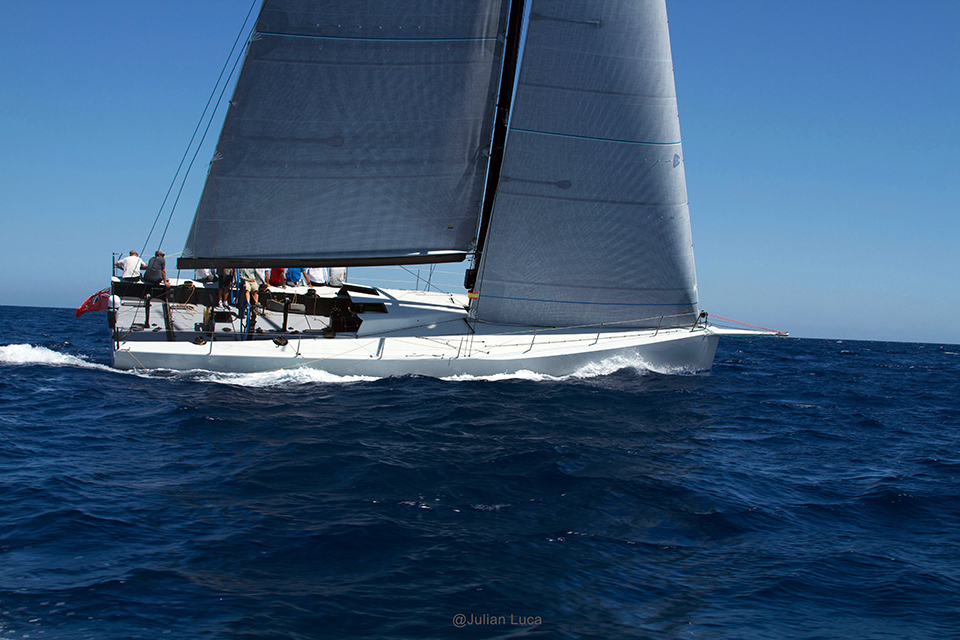– August 20 2020
Stefan Jentzsch turned to Botin Partners for a custom 56-footer that would push the boundaries of offshore performance to the limits. The outcome is the result of a close collaboration between Jentzsch, his long-standing race team, Botin, Doyle Sails, Valencia-based King Marine and Carbo-Link.
Over the last few years the team has ticked off class and overall wins in numerous classic races, including last year’s difficult Middle Sea Race and in 2017 the Cape to Rio Race. The latter is an impressive feat for this triennial 3600-mile race across the South Atlantic considering they raced a Carkeek 47, not a Maxi. This team prefers racing offshore with a group that’s small but versatile, trading some creature comforts to maintain this tight footprint. And in no way does small size correlate to diminished interest in their results: this is one of the best-prepared teams racing offshore today.
Among several credible options, the team chose Botín Partners, in part because of their success in TP52 designs, but also their more recent successful offshore designs and fertile ideas on matching design concepts with functional realities.
‘This team knows exactly what they wanted,’ said Adolfo Carrau of Botín. ‘They had five years of collected performance data so they knew the average range of conditions to target in the design. They knew that TP52s rate well but they wanted a boat a little larger, yet not so large that a canting keel was going to be cost-effective for rating. So we opted for a fixed keel design with water ballast used to compensate for the smaller hiked crew.
‘And unlike the TPs, their offshore program meant the boat had to be completely waterproof yet also lightweight and strong. There are many details needed to keep a highspeed boat like this waterproof, so deck design is really important. Many builders underestimate the effort needed to achieve this, but with Marc working with King Marine build manager Tony Evans and Black Pearl technical consultant Micky Costa, they have been able to achieve success.’
Read the full article: Seahorse Magazine
